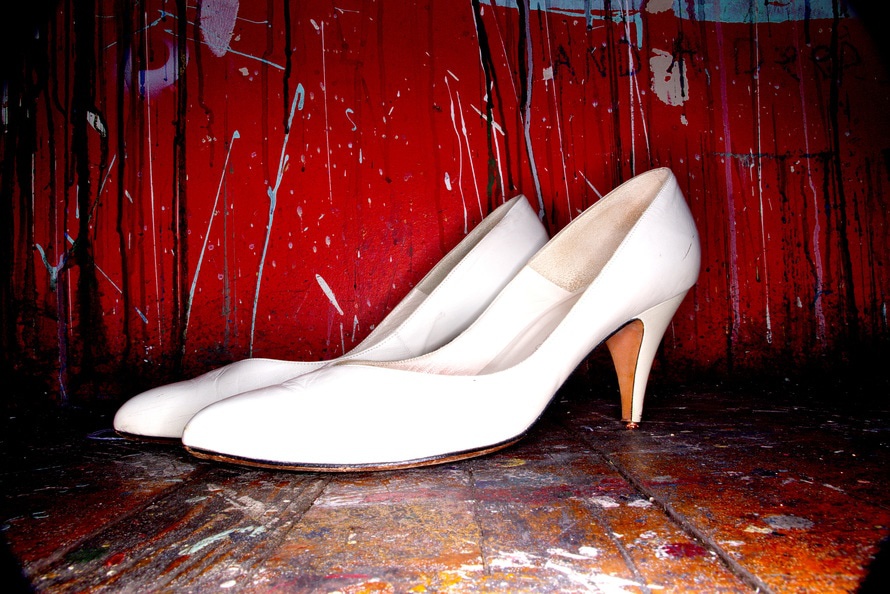 High heels might look fabulous–but looks can be deceiving! There’s a strong connection between wearing high heels and developing plantar fasciitis (not to mention a host of other ailments and problems.)
High heels might look fabulous–but looks can be deceiving! There’s a strong connection between wearing high heels and developing plantar fasciitis (not to mention a host of other ailments and problems.)
So, does that mean your stiletto days are over? Is there a healthy way to wear high heels without sacrificing the health of your heels and feet?
We’ve got your answers!
The Connection Between High Heels and Plantar Fasciitis
The connection between wearing high heels and developing plantar fasciitis revolves around this fact: High heels distribute your weight unevenly and force the arch of your foot into an unnatural position. This impacts your gait as well as the way the force from walking and other activity is distributed–putting a strain on your arch and causing tearing and inflammation.
High heels also typically fail to support your heels with cushioning, meaning that the pad of your heel is pressed into a hard, unsteady surface. And that’s not all. Even not wearing high heels can cause plantar fasciitis (if you wear them regularly enough!) Since high heels leave you with a weakened arch, suddenly switching to more supportive shoes after chronic high heel use still leaves you with an arch that can’t as effectively absorb impact or support your weight.

More Trouble with High Heels
Plantar fasciitis isn’t the only trouble that can come from high heels, unfortunately. Because of the unnatural position of the heel and the raised calf, atrophy of the achilles tendon and a weakened calf muscle can occur. High heels also carry an increased likelihood to injuries of the ankle through a sprain after a fall when the heel catches in a crack or raised surface and the shoe is destabilized, causing the ankle to pitch sideways.
High heels can also harm your toes, which are more compressed because of the downward pressure into the toe of your shoe. Bunions, hammertoes, corns, neuromas, calluses, and ingrown toenails are all common conditions for chronic high heel wearers.
In addition to these problems, wearing high heels can also cause back, neck, and shoulder pain–since high heel’s disrupt the entire body’s alignment as the weight is shifted unnaturally to the balls of the foot.
How to Wear High Heels Without Pain

If you love heels, don’t despair. You can still love your feet without sacrificing the style you love! Simply follow a few key guidelines.
- Don’t immediately change from wearing mostly heels to wearing flats! If you’re accustomed to high heels and an unnaturally elevated arch, switching to flats cold turkey can be just as damaging as wearing heels in the first place. Wearing very high heels can cause the Achilles tendon to atrophy, meaning that when it’s stretched and worked harder in much lower flats, the chances of a break or tear are much greater. Lower your heel height gradually.
- Don’t be afraid to wear a little heel. Supportive shoes with a very slight heel can actually better for your feet than unsupported flats like ballet slippers, which can lead to flat feet. Heels should be 1-2 inches at the most.
- Fit is crucial. Many women make the mistake of buying heels that are too small for them. When wearing heels, it’s more important than ever to get the exact right fit.
- Keep in mind that slope is more important than height when looking at comfort and negative impact. Look for a thicker heel to distribute weight more evenly, and look for heels that are sloped gradually.
- Stretch your heels (the ones on the bottom of your foot!), plantar fascia, and calves before and after wearing heels to keep key muscles and ligaments strong and in good condition. (Try these easy stretches!)
- If you must wear high heels, try to wear them only to sitting events. And bring more supportive shoes to change into after the event–since the walk to and from the car is usually a significant part of the walking you’ll be doing!
If you wear high heels a lot–or are noticing pain in your feet or heels, it’s time to make some positive changes in your footwear to avoid further damage or injury. It’s also a great idea to incorporate slip-in orthotics to your footwear to cushion, support, and heal the damage caused by high heels. Wearing high heels might look fabulous, but it has nothing on the look–and feel–of healthy feet!



